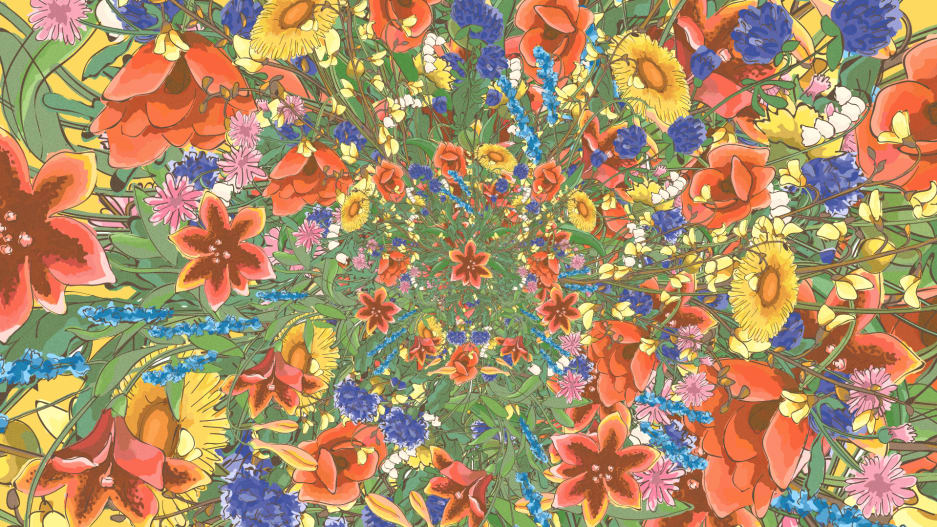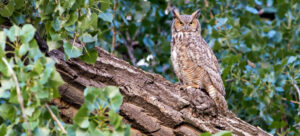To make sure more beneficial bugs come to their fields to feed on pests, farmers are planting them homes in the middle of their fields. (Extra bonus: It looks beautiful.)
By Adele Peters
On a farm near the town of Buckingham, England, a crop of oilseed rape–a plant that would normally make the field a solid yellow color–is planted with long, wide rows of wildflowers in the middle. The field is 1 of 14 sites in a study testing how well the wildflowers attract pest-eating bugs, and how well they could help replace commercial pesticides.

Tiny parasitic wasps, for example, eat aphids, a pest for multiple crops. But the wasps only provide pest control when they’re first born; the adults need to eat pollen and nectar from flowers. In a typical industrial farm field, with a single crop planted across acres, there isn’t enough food for the natural predators to survive. Planting strips of flowers can change that.
The study also includes borders of wildflowers around each field, something that some farmers have used over the past two decades in the area to promote general biodiversity, not specifically for pest control. But because small bugs can’t travel far, researchers are testing strips of flowers placed in strips in the middle of fields. It’s something that’s possible to do now because farming technology has evolved.
“The wide-scale adoption of precision agricultural systems, particularly GPS mapping and precision application technologies, means that it should now possible to implement and protect these in-field habitats,” researchers Ben Woodcock and Richard Pywell, of the U.K.-based Center for Ecology and Hydrology, write in an email. “This would have been very challenging a few years ago. While this is unlikely to eliminate the need to apply pesticide, it may mean that pests populations are maintained below levels at which they cause damage to crops for longer periods, thus reducing the number of pesticide sprays applied.”
With mounting evidence about the problems caused by pesticides–including polluting drinking water and killing bees–many of the insect-killers have been taken off the market in the U.K. and Europe. But others are still frequently used; that frequent use makes them less effective, as pests become resistant to the chemicals. “The upshot of this is that the crop protection ‘toolbox’ is becoming smaller and more vulnerable so now is a good time to rethink our future crop protection strategies to consider the use of alternative pest control measures alongside conventional pesticides,” say Woodcock and Pywell.
Similar studies have tested the same approach elsewhere. In one study in Switzerland, researchers planted poppies, cilantro, dill, and other flowers along fields of winter wheat. The plants fed and sheltered insects like ladybugs that ate the bugs that eat wheat, and ultimately reduced leaf damage 61%. The researchers estimated that choosing the right mix of flowers could increase yield 10%, making it economically self-sustaining or even profitable to keep planting flowers.
In the U.K., the researchers plan to keep expanding the tests to other farms. “A core aspect of the study is to test the value of these approaches on typical commercial arable farms as we want to know when, where, and under what conditions these approaches work,” they say. “Ultimately, if it only functions in one farm, this is of little value. We want to know if this type of ‘ecological farming’ is generally beneficial and practical on most farms.”
They also want to understand the economic value of the approach, and how it can be incorporated with modern farming tech. “We hope this will underpin a rethink of farming practice to include a more ecological approach to agriculture where farmers actively enhance the underlying ecological processes that benefit crop production,” they say. “We also intend to use this experimental network to demonstrate this approach to industry and to train farmers–our experience has shown that farmers often need to see these approaches in action on real farms before they adopt them.”
Pesticide use probably won’t be eliminated completely, they say. But by attracting pest-eating bugs–along with other techniques, like breeding plants that can better resist pests, using technology to better diagnose and forecast pests, and application systems that can apply tiny amounts of pesticide more precisely–pesticide use could be dramatically reduced, and serve as a last line of defense on farms, rather than the first thing farmers reach for.
(Adele Peters is a staff writer at Fast Company who focuses on solutions to some of the world’s largest problems, from climate change to homelessness. Previously, she worked with GOOD, BioLite, and the Sustainable Products and Solutions program at UC Berkeley.)




